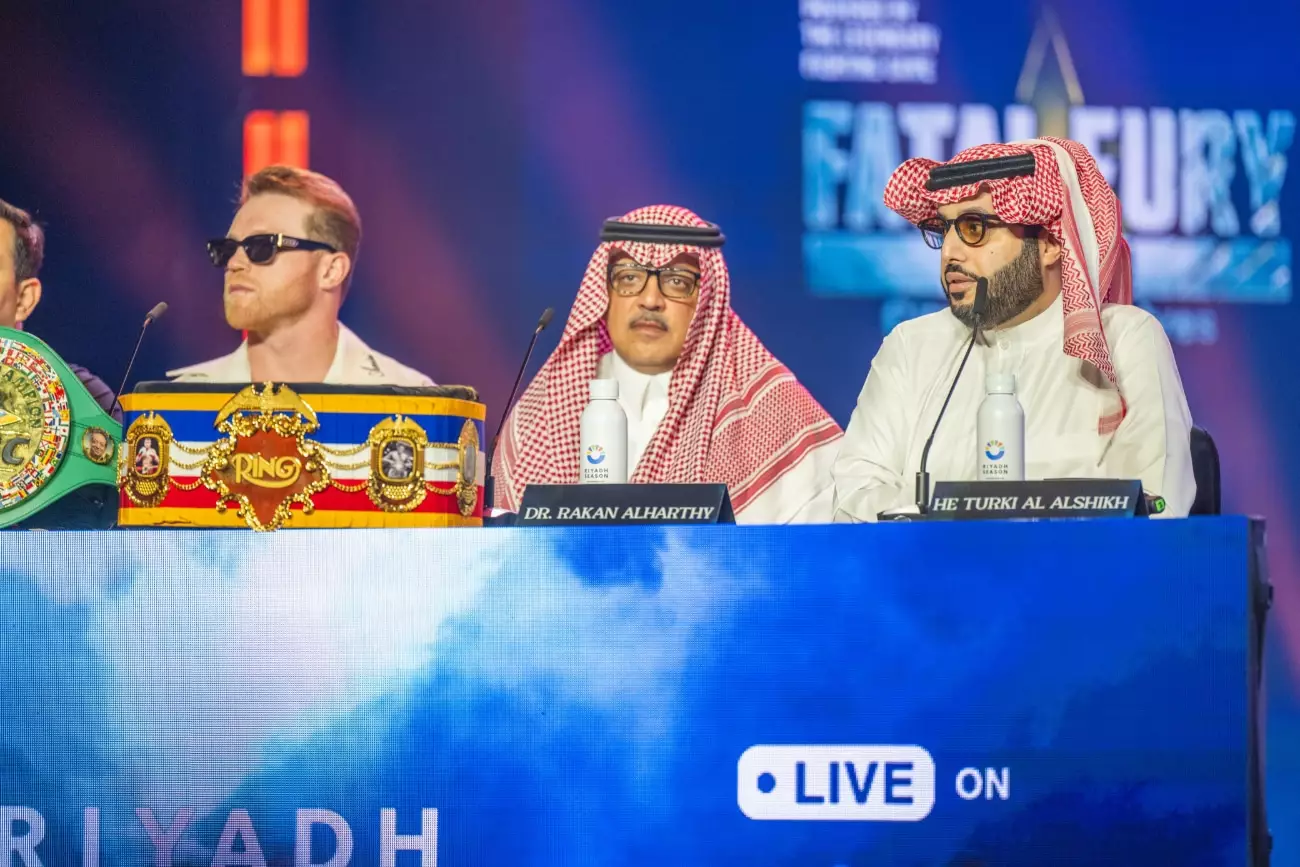In a move that has raised eyebrows among boxing aficionados, Turki Alalshikh announced plans to feature a heavyweight clash between Jared Anderson and Jarrell ‘Big Baby’ Miller on the undercard of the much-anticipated Canelo Alvarez vs. Terence Crawford bout. Dubbed an event of “huge exposure,” especially with the spotlight provided by a streaming giant like Netflix, this announcement could indicate a shift in how boxing promoters are choosing to engage the fans. However, placing a fighter with Miller’s controversial history alongside rising star Anderson feels like a gamble that may not pay off.
In the vibrant world of boxing, undercards serve as the warm-up act, showcasing upcoming talent and providing fans with excitement before the main event. The format proposed by Alalshikh includes four primary matchups, with the Anderson-Miller fight serving as a notable portion, albeit not the co-feature. Instead, the spotlight may fall upon a more intriguing lightweight contest between Abdullah Mason and Sam Noakes for the WBO vacant title, which has the potential to attract a broader audience. The question remains whether Anderson-Miller can hold its own amidst a card filled with talent.
The Dilemma of Jarrell Miller
Jarrell Miller’s track record is a tapestry woven with both potential and controversy. While boasting a respectable record of 26 wins, 1 loss, and 2 draws, his recent performances have been far from stellar. Miller’s inability to clinch a victory since 2021, coupled with a daunting history of testing positive for performance-enhancing drugs (PEDs), presents a persistent black cloud over his career. Fans are not merely interested in the numbers; they remember the scandals that marred his credibility.
The boxing community has increasingly become vocal about its disdain for fighters who have been caught cheating, advocating for cleaner sports. By including Miller—a fighter who has tested positive multiple times—on the undercard of such a high-profile event, the risk is not just from a promotional standpoint but also from a fan engagement perspective. This decision begs the question: Is Alalshikh prioritizing financial gain over integrity?
Furthermore, if the intention is to spotlight Jared Anderson, a promising fighter with a clean slate, it would make more sense for him to face opponents who can elevate his profile rather than drag it down. Alternatives like Agit Kabayel or Richard Torrez Jr. represent a fresh approach, one that could increase interest in future bouts.
Fan Engagement: The Heart of Boxing’s Evolution
At the core of Turki Alalshikh’s vision lies an ambition to align with fan expectations. His assertion that “I work from the side of fans” translates into a desire to promote fights that resonate with boxing enthusiasts. However, a critical look at this upcoming card challenges whether he fully grasps the pulse of the crowd. There’s an expectation for matchups that not only entertain but also uphold the sport’s integrity and showcase emerging talent without the overshadowing negativity of past misdemeanors.
Moreover, the preliminary card boasting “six to ten fights” free to watch offers a tantalizing prospect for viewers, potentially pulling in a younger demographic eager for accessible content. However, will the initial excitement overshadow the palpable tension stemming from including fighters such as Miller? The juxtaposition of hungry up-and-comers against fighters with tarnished legacies creates a convoluted narrative that fans may find difficult to digest.
A Cost-Effective Strategy or a Step Back?
From a financial standpoint, including Miller in the lineup could be a cost-effective strategy aimed at drawing in viewers who may remember his previous prominence in the sport. Yet, fans are not simply passive viewers; they are a community that craves authenticity and respect for the sport. The reception of potential matchups hinges greatly upon how they are perceived in light of integrity violations.
Turki’s approach to structure a major event with Netflix aims for an expansive reach, but this strategy may inadvertently alienate a portion of the dedicated audience who value the sport’s traditional ethics. Yes, boxing needs to evolve and embrace modern platforms, but not at the expense of sacrificing the moral fabric that binds fans to the sport.
In the end, while the allure of high-profile matchups can temporarily entice viewers, the question remains: Can the boxing community afford to overlook the values that maintain its credibility for the sake of profit and spectacle?

